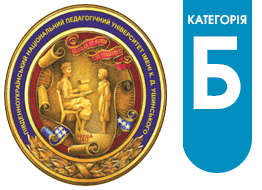Ethical standards
The editorial board of Science Cognition: Methodology and Technology maintains a certain level of requirements when selecting and accepting articles submitted to the editorial board. These rules are determined by the scientific direction of the journal and the standards of quality of scientific works and their presentation, accepted in the scientific community.
The editorial calls for adherence to the principles of the Code of Ethics for Scientific Publications, developed by the Committee on Ethics of Scientific Publications (COPE).
Review process:
- The author submits an article to the editorial board that meets the requirements of the journal.
- The responsible secretary conducts a preliminary assessment of the articles received by the editor, the correspondence of the content of the profile material and the subject matter of the journal, and sends them for review by the members of the editorial board, scientific editors of sections, and specialists from the problems under consideration.
- All manuscripts submitted to the editorial board are sent according to the research profile to reviewers. Appoints reviewers to the chief editor of the journal.
- For reviewing articles, both members of the editorial board of a scientific journal and third-party highly qualified specialists with profound professional knowledge and experience in a specific scientific field can act as reviewers.
- The reviewer, as a rule, within 14 days makes a conclusion about the possibility of printing the article (fills in a standardized form containing the final recommendations).
- The review is conducted confidentially on the principles of double-blind review (double "blind" review, when neither the author nor the reviewer knows about each other). The interaction between the author and the reviewers takes place through the issuing editor of the journal.
- If the reviewer indicates the need for making certain corrections to the article, the article is sent to the author with a proposal to take into account the comments when preparing an updated version of the article or to reasonably refute them. The author adds letters to the revised article, containing answers to all comments and explains all the changes that were made in the article. The corrected version is re-submitted to the reviewer for making a decision and preparing a reasoned conclusion about the possibility of publication.
- In case of inconsistency with the opinion of the reviewer, the author of the article has the right to provide a reasoned response to the editors of the journal. In this case, the article is considered at a meeting of the working group of the editorial board. The editorial board may send an article for additional or new review to another specialist.
- The final decision on the possibility and expediency of publication is made by the Editor-in-Chief, and if necessary, by the meeting of the editorial board as a whole.
- The article is approved for publication by the technical editor. Minor corrections of a stylistic or a formal nature that do not affect the content of the article are made by the technical editor without the consent of the author.
The procedure for reviewing articles received by the editors of the journal is aimed at ensuring the quality of articles published in the journal. All articles submitted to the editors for publication are reviewed. The review should provide a comprehensive and objective assessment, analysis of the advantages and disadvantages of this article.
Manuscript review is confidential. Reviewers are reported that the manuscripts sent to them are the intellectual property of the authors and relate to non-disclosure information. Reviewers are not allowed to make copies of the article submitted for review. Violation of confidentiality is possible only in the case of a statement of inaccuracy or falsification of materials, in all other cases, its preservation is mandatory.
When reviewing scientific articles, reviewers should:
- pay special attention to the relevance of the scientific problem raised in the article;
- characterize the theoretical and applied value of performed research;
- correctness of the given mathematical calculations, graphs, drawings;
- assess how the author’s conclusions relate to the existing scientific concepts;
- assess the authors' compliance with the rules of scientific ethics, the correctness of references to literary sources.
An essential element of the review should be the reviewer's evaluation of the personal contribution of the author to the solution of the problem under consideration.
It is advisable to note in the review the conformity of the style, logic and availability of scientific calculations, as well as to make a conclusion about the reliability and validity of the conclusions of the author (s) in this work.








